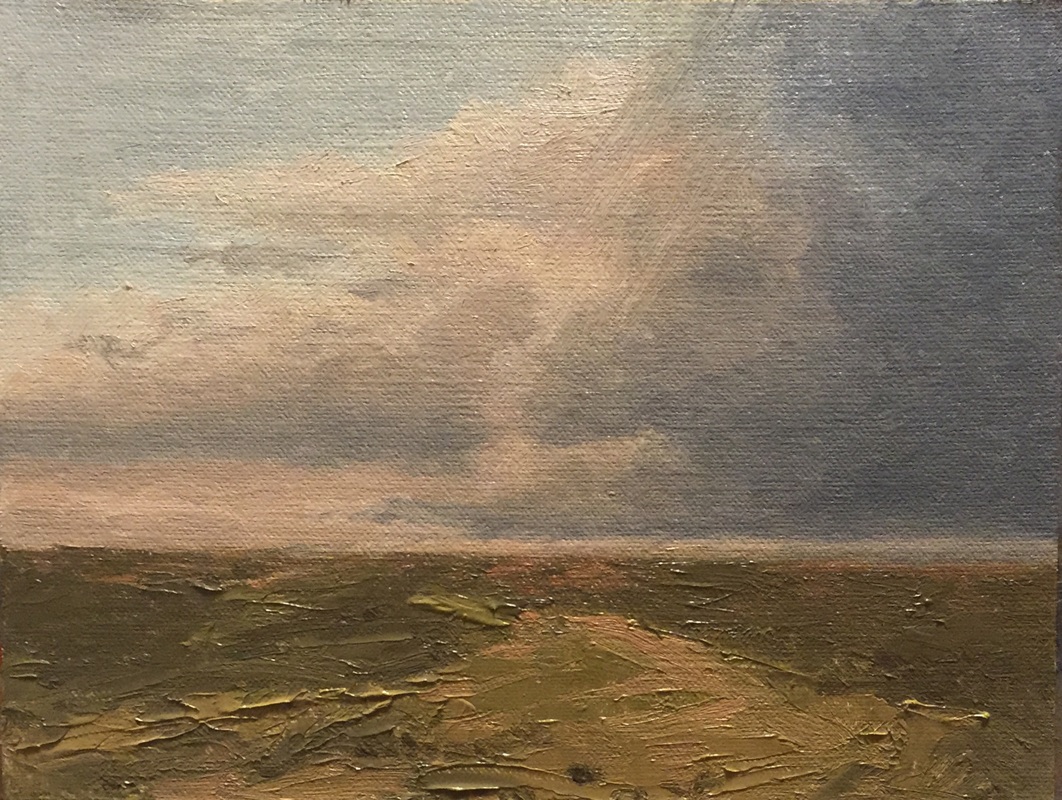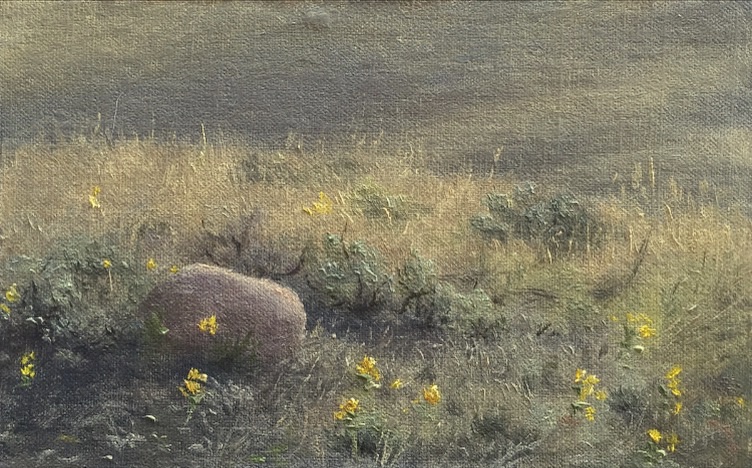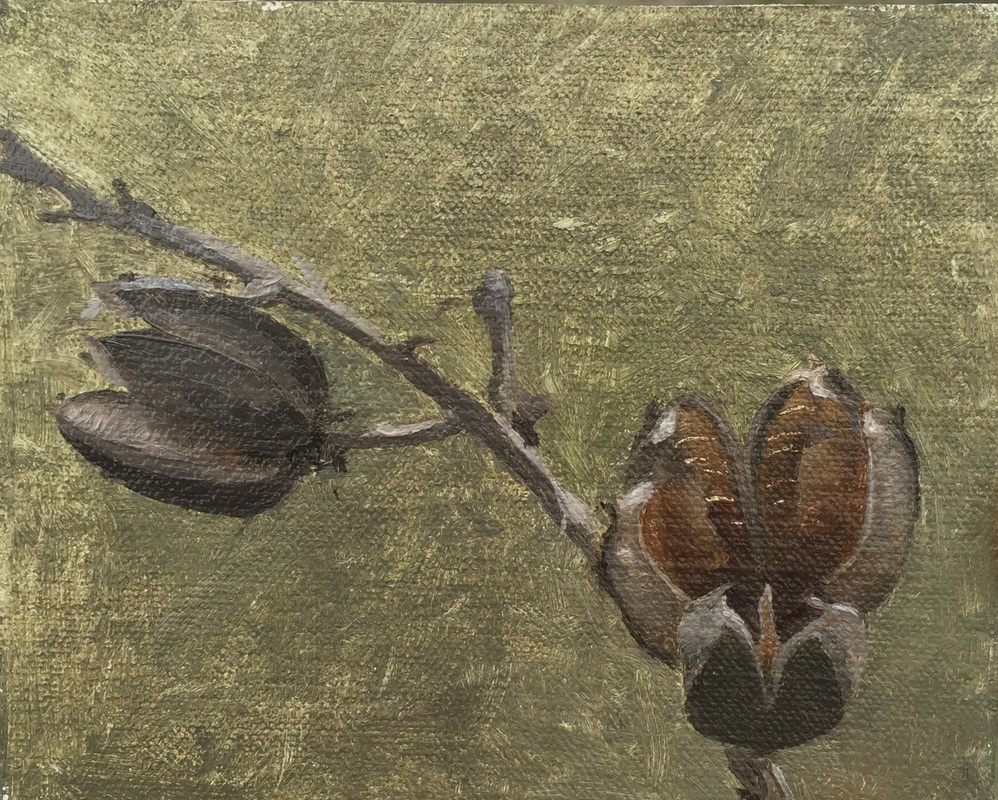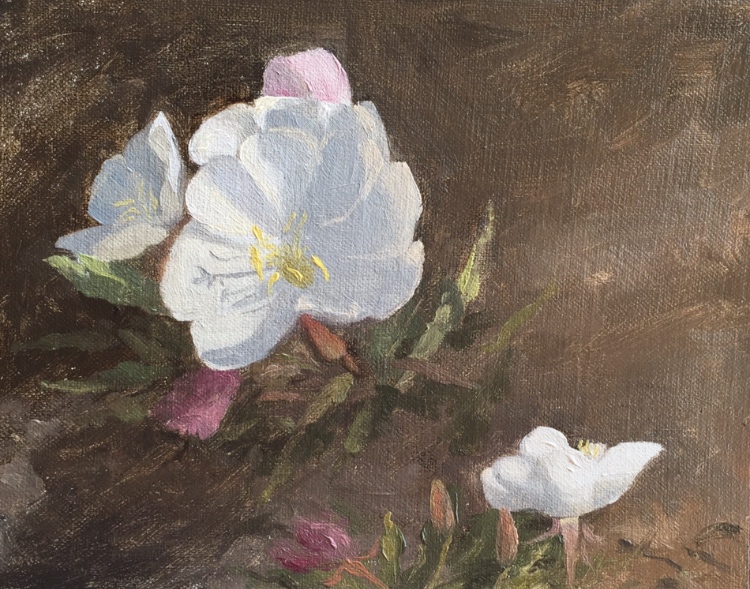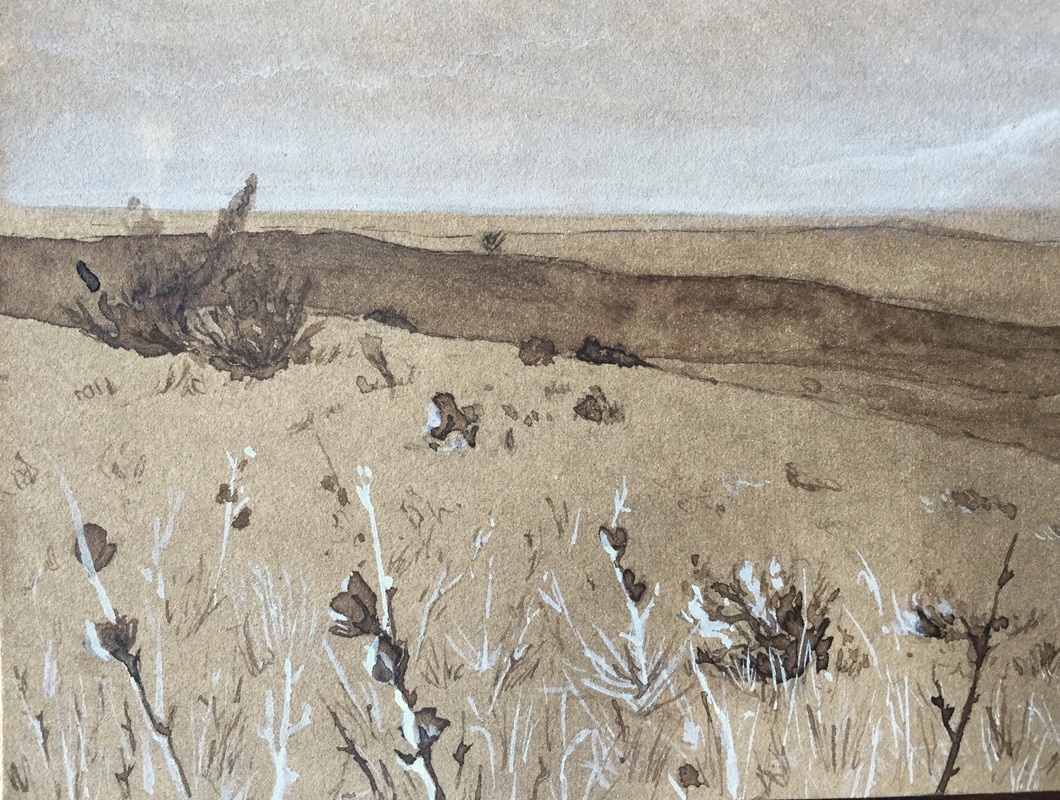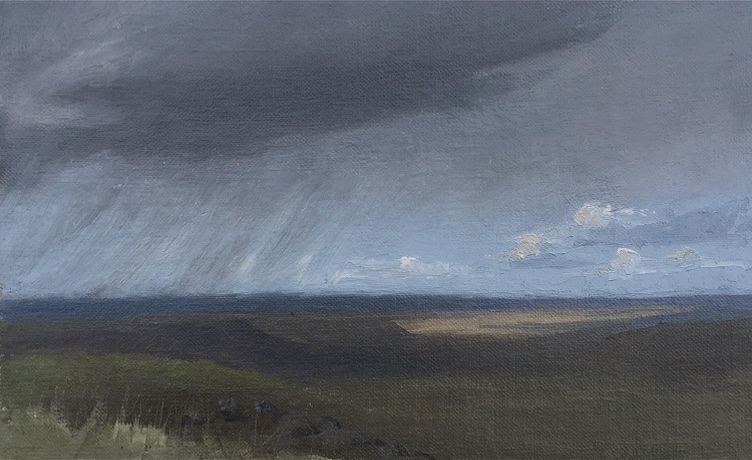ASC Partner Artist
It’s 5 a.m., and I’m crammed in the back of a car with six strangers, rattling down a dirt road as we race to beat the sunrise. Sleep has overtaken me by the time we reach our destination, but I snap out of it when we step into the chilly air. The night sky is lifting, and a pale light illuminates the endless expanse of rolling grasslands that greet me.
I am an artist, not a scientist, and I’m observing my surroundings in terms of color, line and form. I’m aware that my scientist companions have a different perspective, so I wrack my brain for questions. What is this plant? What bird makes that call? Why is the land shaped like this? Why are there cactus growing here?
I’m hungry for information on my first prairie hike, and my hope is that this time spent shadowing the ASC Landmark crew will give me new insight into the land I will be painting.
Tim checks the GPS with more frequency, warning that we should be there soon. The anticipation is thrilling. We move cautiously, listening and checking through our binoculars, until we hear the sounds of corks popping—the party is not far away. That sound, I’m told, is the mating call of the greater sage grouse.
I’m impressed by the number of birds we see, but I’m told that according to recent data, the natural habitat of the sage grouse is disappearing quickly. The data Tim and Elaine collect will contribute to an ongoing study of sage grouse populations and help conservationists fight for their protection.
While Tim and Elaine count the grouse, I whip out my sketch book and make some frantic notes about the sight I’m witnessing. I make a loose notation of the shadows cast by the rising sun, the direction of the light, and the colors as they recede into the horizon. We watch the grouse for 10 more minutes until something spooks the birds and the sky fills with flapping wings.
After only three days with the Landmark crew, I’d hiked 24 miles and seen a wide variety of ecosystems and topography that exist across this region. Learning about the ecology has helped me realize that the shapes, lines and colors I’m painting are a result of wildlife, humans and plants evolving together over millennia. In the end, I hope to come away from this month with a deeper understanding of what makes the prairie so special and how we can help protect it, which will ultimately become the driving message behind my final paintings.

